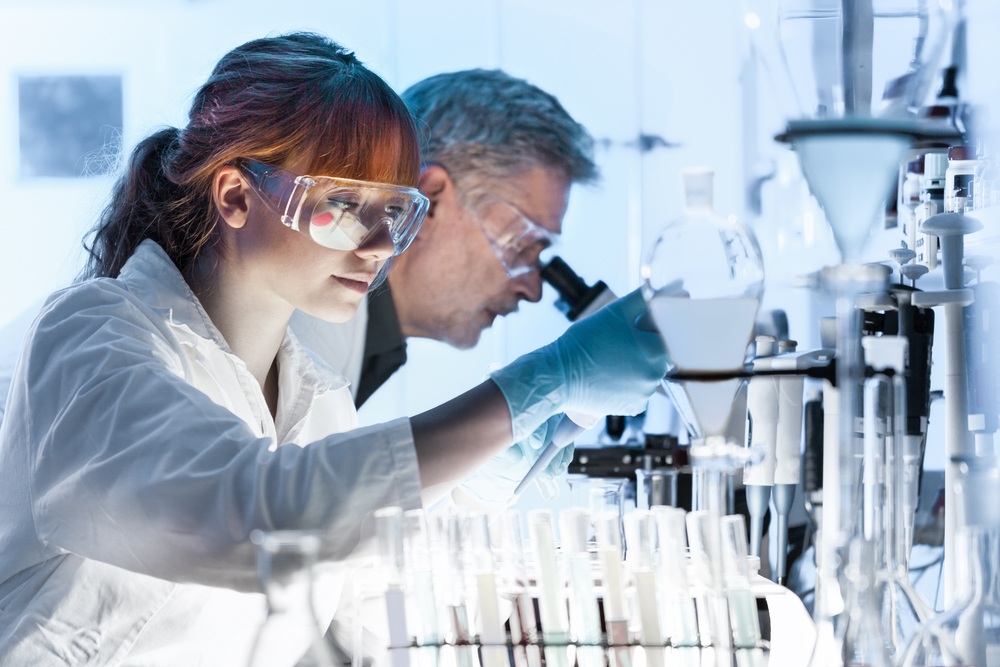Mutant Huntingtin Slows Cells’ Protein-Building Machinery, Study Finds
Written by |

Stalled protein-building may underlie Huntington’s disease, according to data from a recent study.
The findings showed that the mutated huntingtin protein, which is at the heart of the disorder, slows down ribosomes, the small cell machinery structures responsible for building new proteins.
According to investigators, knowing this and understanding how it happens may open new doors to designing therapies — and may shed light on other neurological disorders beyond Huntington’s.
The study, “Mutant Huntingtin stalls ribosomes and represses protein synthesis in a cellular model of Huntington disease,” was published in the journal Nature Communications.
Although scientists have long known that this mutated gene, called HTT, causes Huntington’s, how exactly that mutation leads to brain cell death has remained unclear.
The mutation itself consists of 40 or more repeats of a three-nucleotide sequence, known as CAG, which stands for cytosine (C), adenine (A), and guanine (G). Of note, nucleotides are the individual building blocks of DNA and RNA, the two types of genetic material.
Now, Srinivasa Subramaniam, PhD, a neuroscientist at Scripps Research, and his colleagues discovered that the huntingtin protein made from these disease-causing repeats causes ribosomes to stall.
“The ribosome has to keep moving along to build the proteins, but in Huntington’s disease, the ribosome is slowed,” Subramaniam said in a press release. “The difference may be two, three, four-fold slower. That makes all the difference.”
Because Huntington’s begins in a central brain region called the striatum, which is responsible for controlling voluntary movements, among other functions, the team engineered striatal cells to have three different degrees of CAG repeats. They then used a technology called Ribo-Seq, a high-resolution global ribosome footprint profiling, along with mRNA-seq, which shows the genes that are and are not active in a cell at a point in time.
Through a series of molecular “snapshots” made possible by these Ribo-Seq and mRNA-seq technologies, the researchers observed that ribosomes spent more time bound to messenger RNA (mRNA) than would normally occur. That slowed protein production for many genes — although, notably, not all — as though passing through a traffic jam in cells harboring Huntington’s mutations.
Of note, mRNA is the molecule created from a particular gene that is used as a template for protein production.
“The idea that the ribosome can stall before a CAG repeat is something people have predicted. We can show that it’s there,” Subramaniam said.
While Ribo-Seq enables researchers to identify which mRNA molecules are associated with a ribosome and are being used to create new proteins at a given moment, mRNA-seq allows them to know which genes are currently active in a cell, by the presence of their associated mRNA.
To verify that the mutant huntingtin protein was behind this finding, the investigators reversed the cells’ delayed protein production by clipping the mutated HTT gene out, using the CRISPR-Cas9 gene-editing tool. After doing so, they observed protein production increased in these cells, confirming that the presence of the mutant huntingtin protein impaired the overall process.
Further confirmation came by adding either normal or mutant huntingtin protein to a mixture containing other ribosomal components and the mRNA for a light-emitting gene. As the amount of mutant huntingtin in the mix increased, the amount of fluorescent protein decreased, suggesting that the mutant huntingtin directly inhibits protein production.
Investigators noticed that another ribosome-stalling protein called Fmrp appeared to be highly active in cells harboring Huntington’s mutations. To explore Fmrp’s possible contribution to slowing protein production, they again used CRISPR-Cas9 to edit the gene coding for Fmrp out of cells containing Huntington’s mutations and those without mutations (controls).
While this change led to more protein manufacturing in control cells, the team was surprised to find no noticeable effects in cells harboring Huntington’s mutations. Although the reason for this remains unclear, one hypothesis is that huntingtin may act independently of Fmrp and at an earlier time point.
The researchers also found evidence that mutant huntingtin slows protein production and limits the overall density of ribosomes on mRNA by binding to ribosomes directly.
“Taken together, our findings indicate that [mutant huntingtin] suppresses protein synthesis [production] via ribosome stalling potentially during translation elongation,” they wrote. Of note, translation is the process by which an mRNA is converted into a protein.
These findings, they say, could lead to the disorder’s progressive development of symptoms.
The team noted that more research must be done to determine the mechanics that stall the protein production, but said the findings offer a new direction for helping people with Huntington’s.
“Developing drugs that interfere with [mutant huntingtin]-mediated mechanisms of ribosome stalling may prevent or slow down the progression of [Huntington’s disease],” they concluded.





